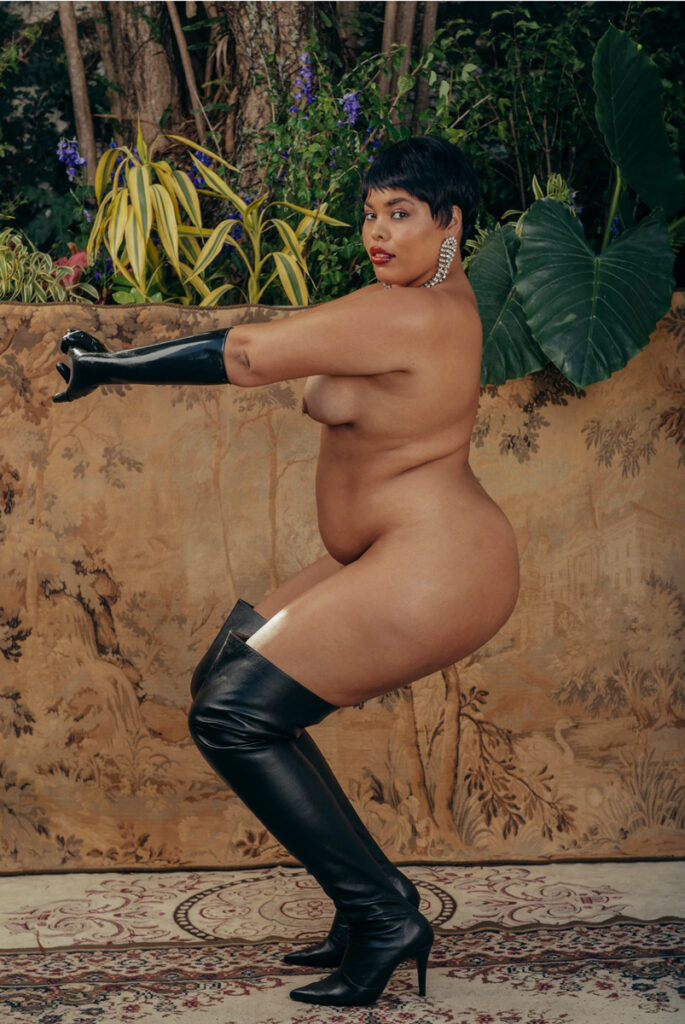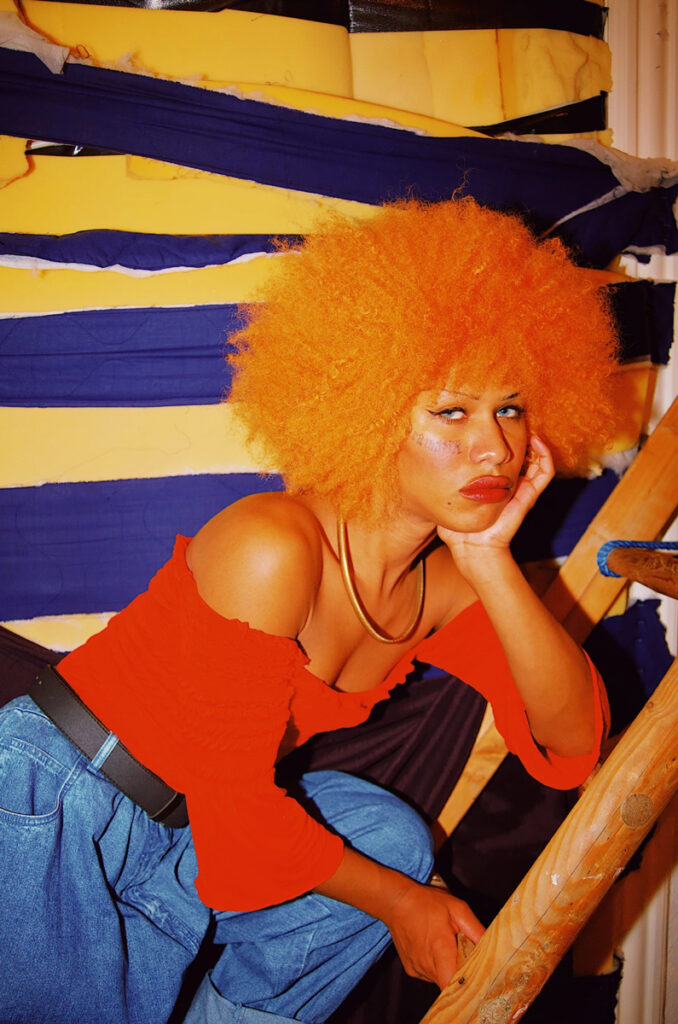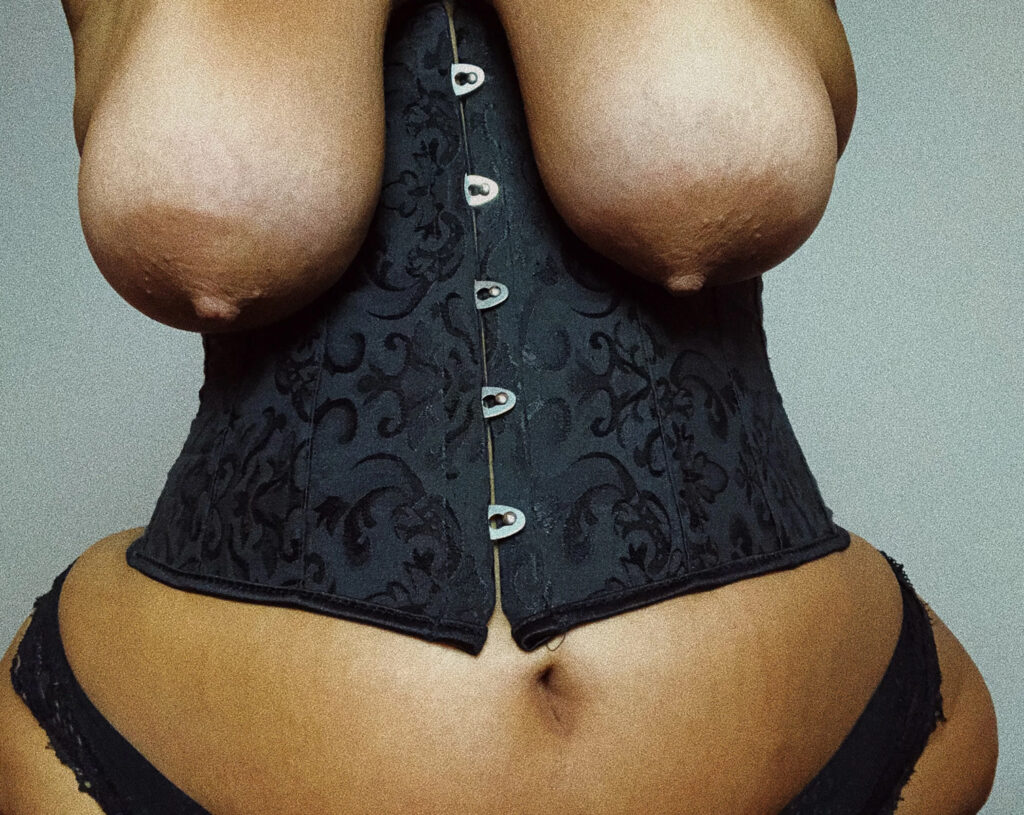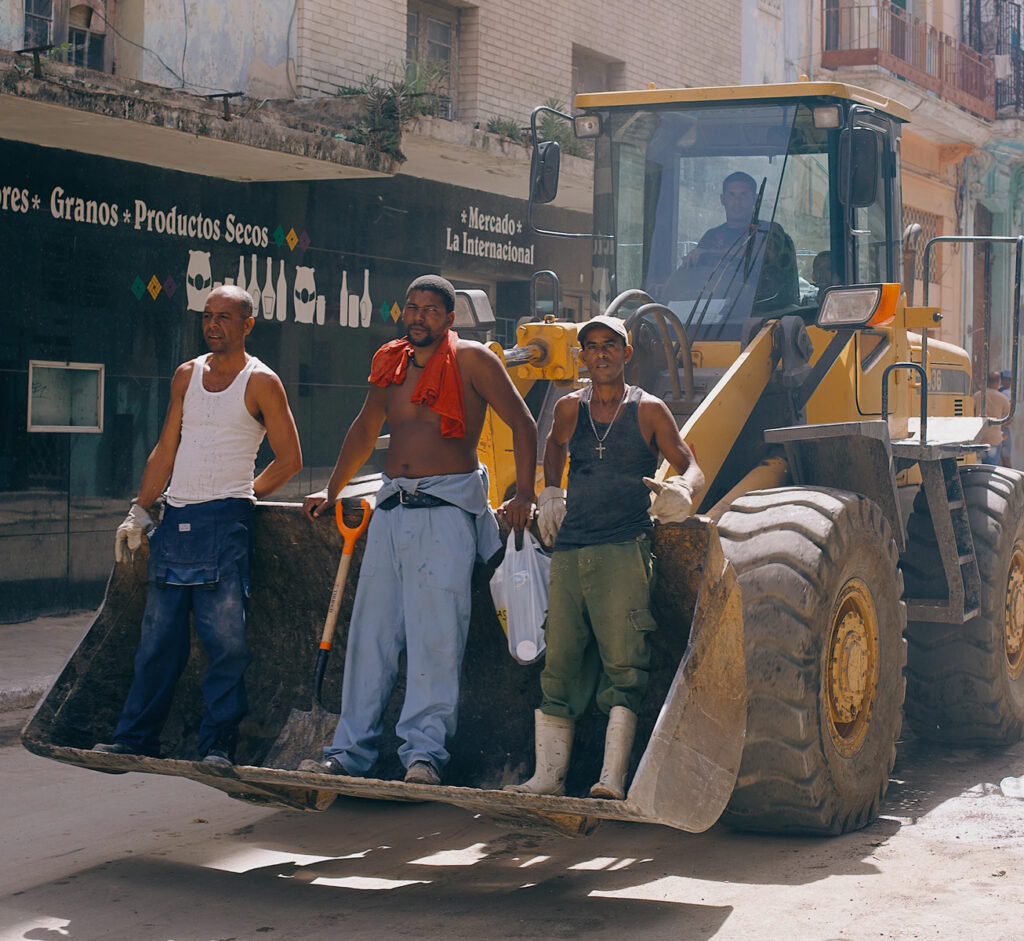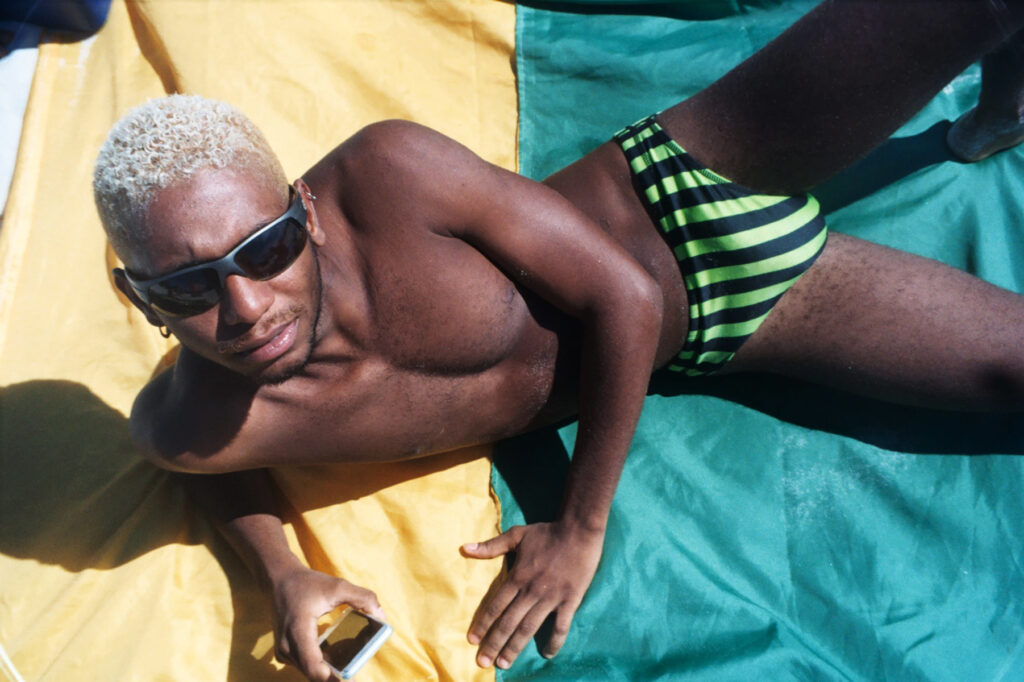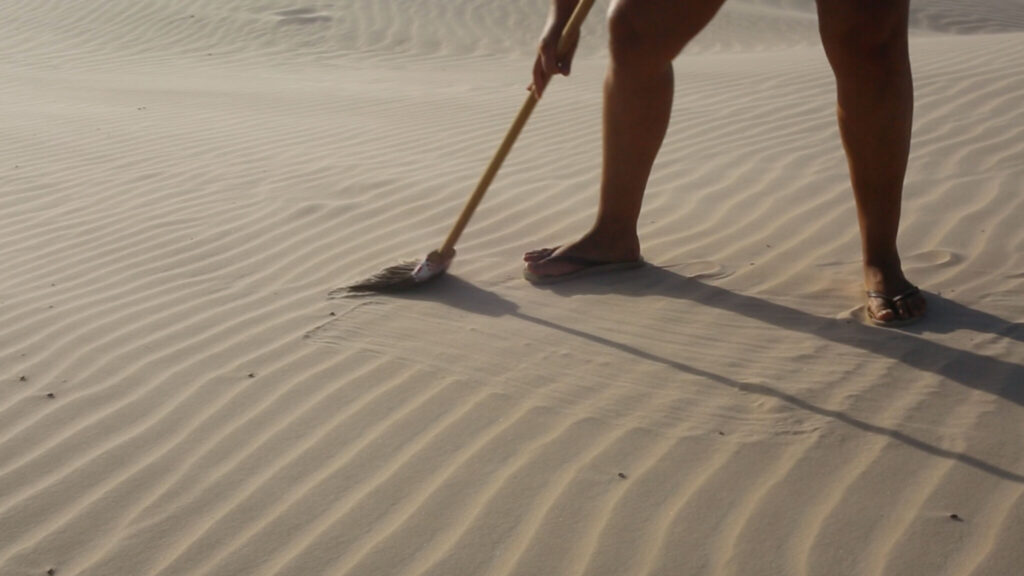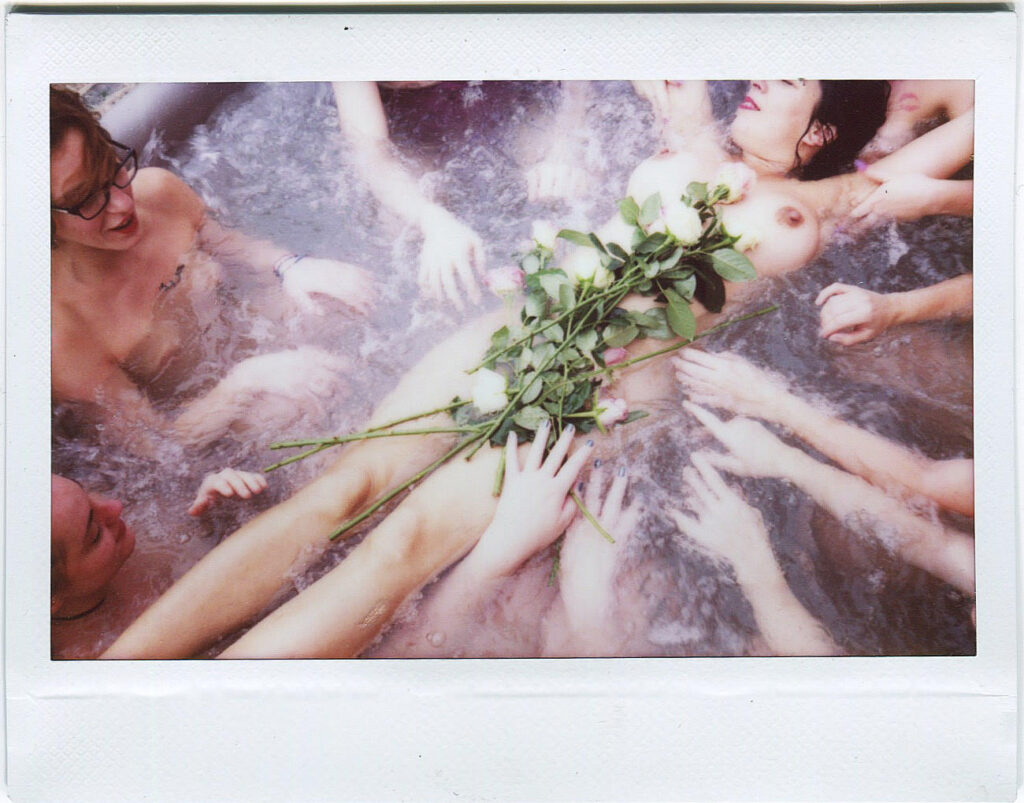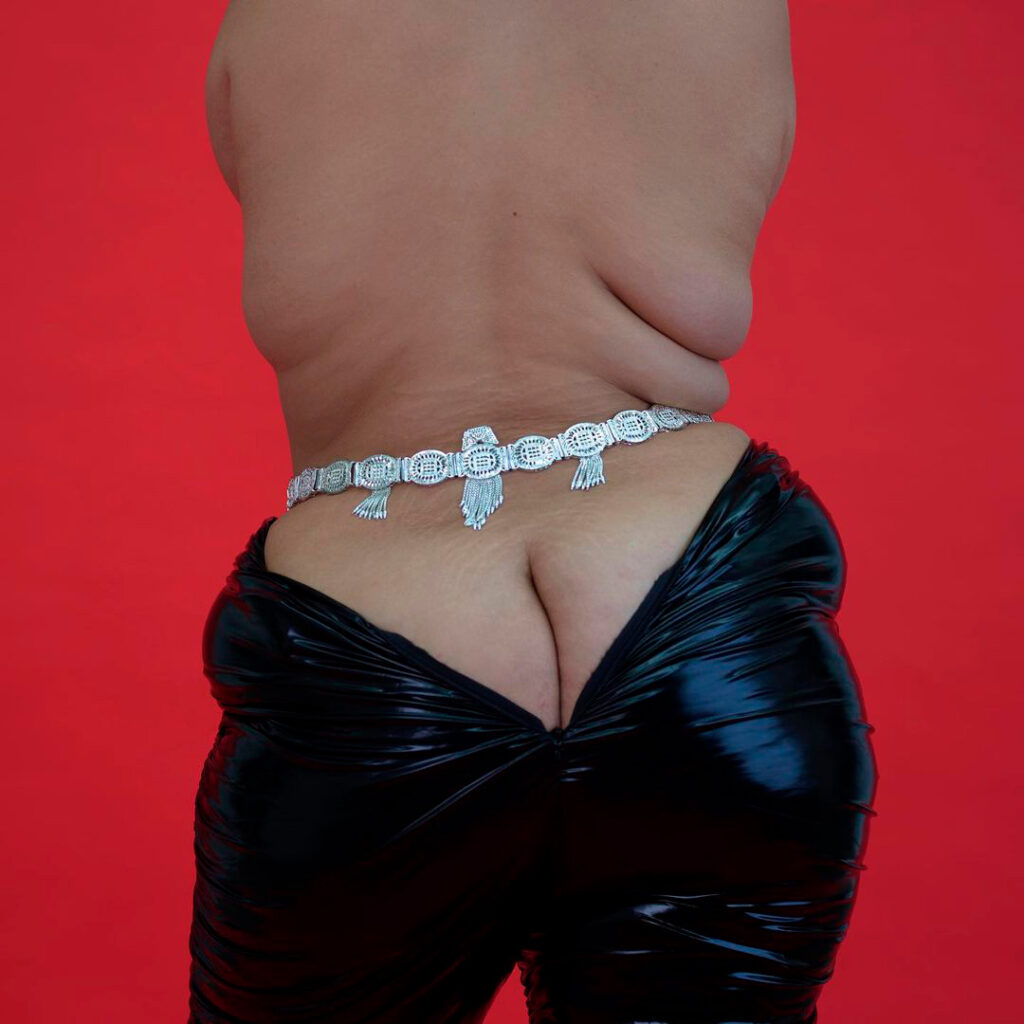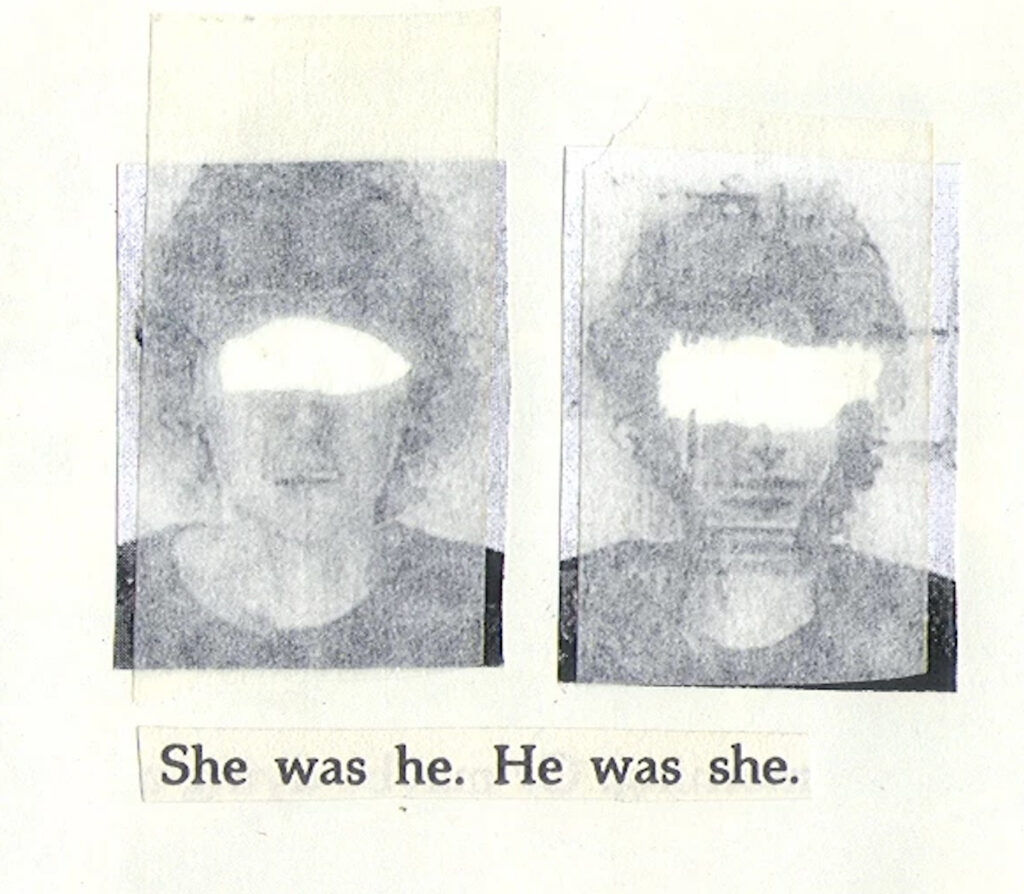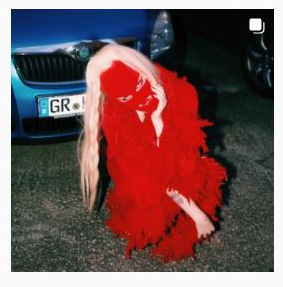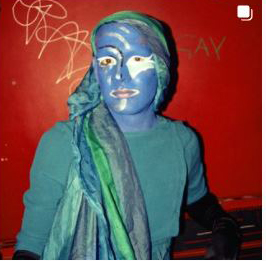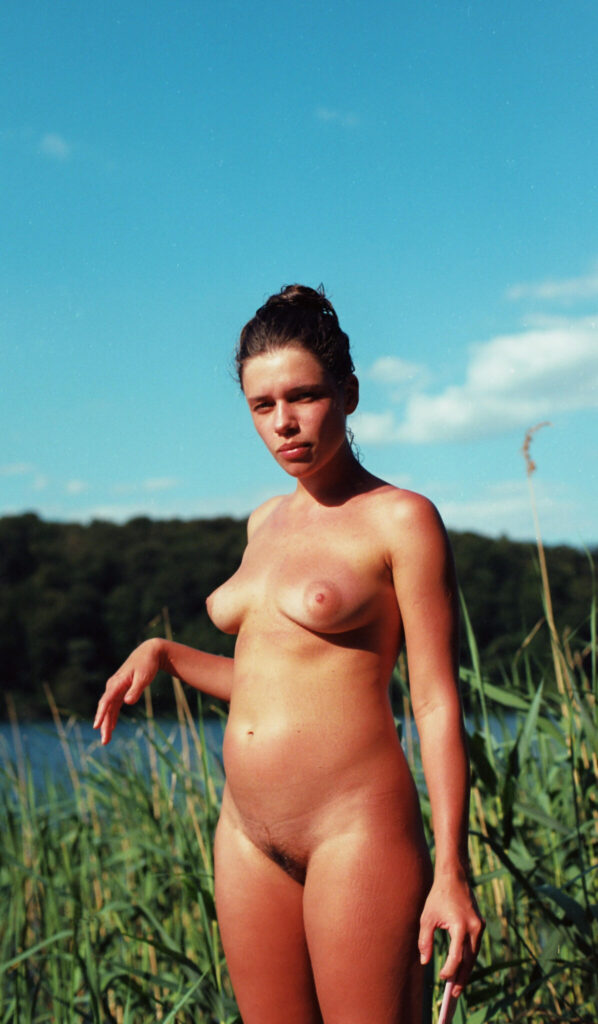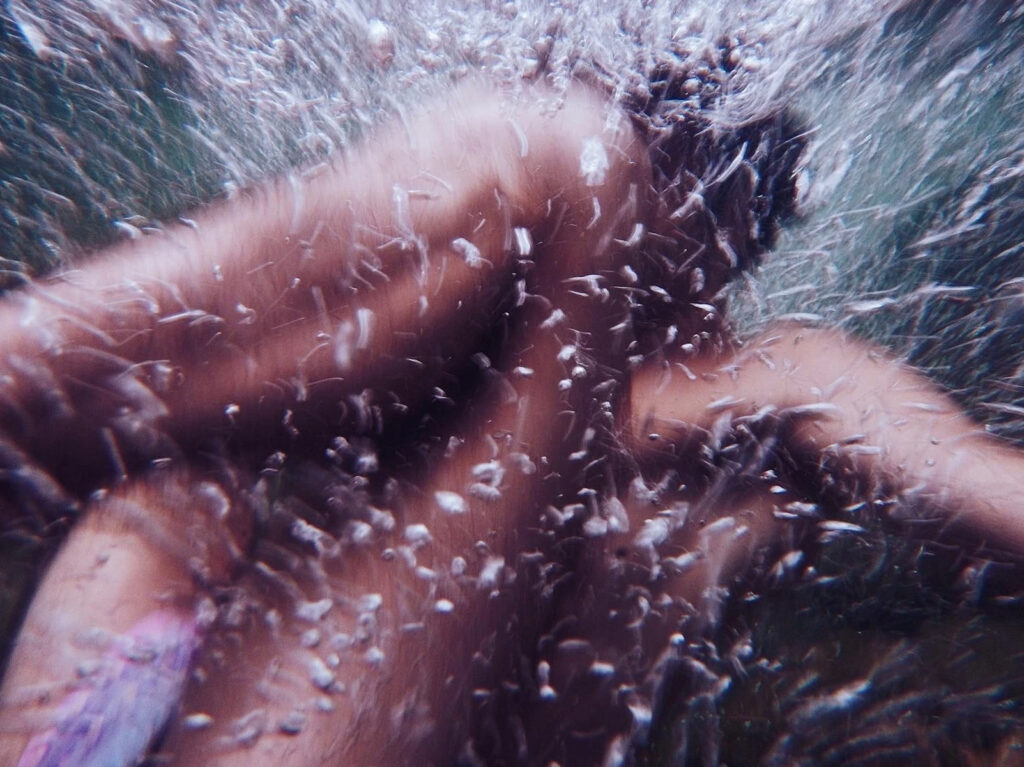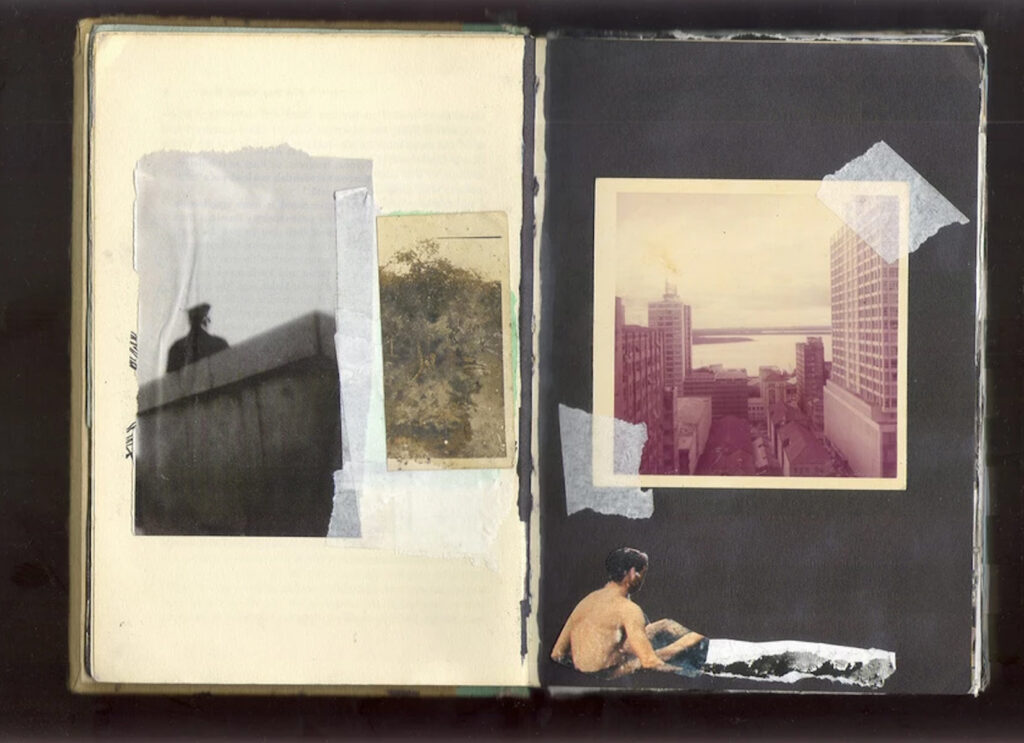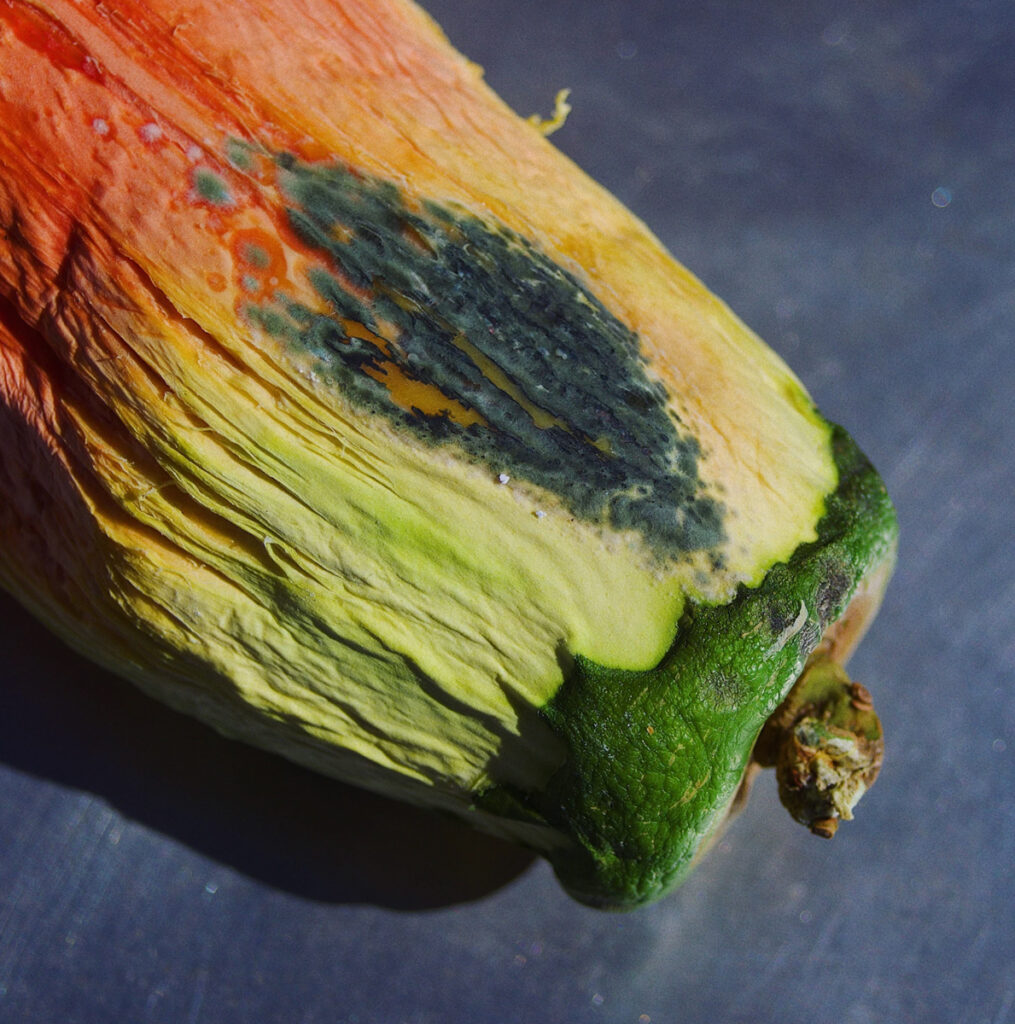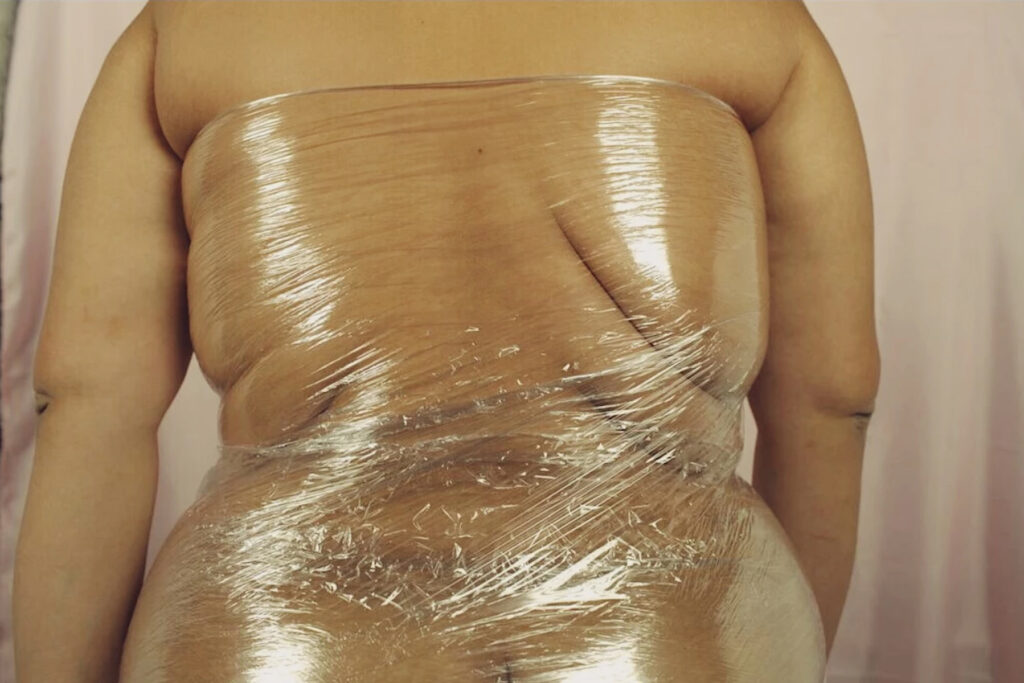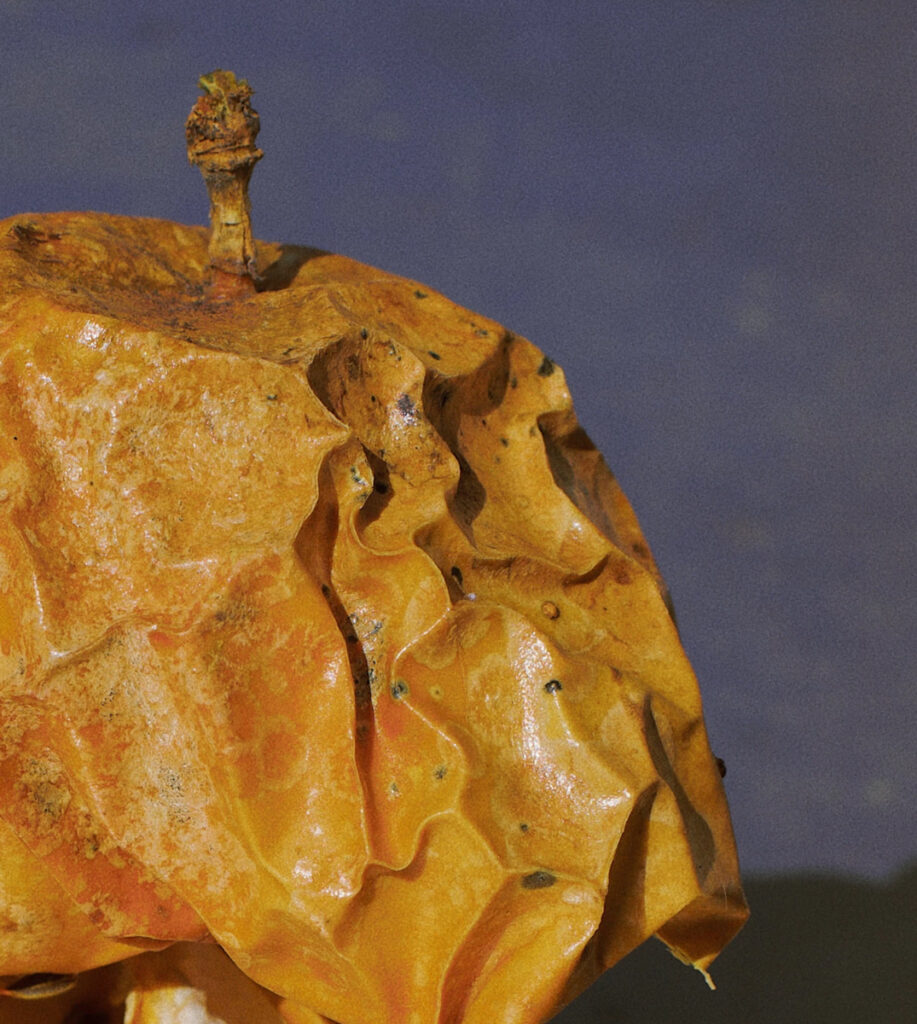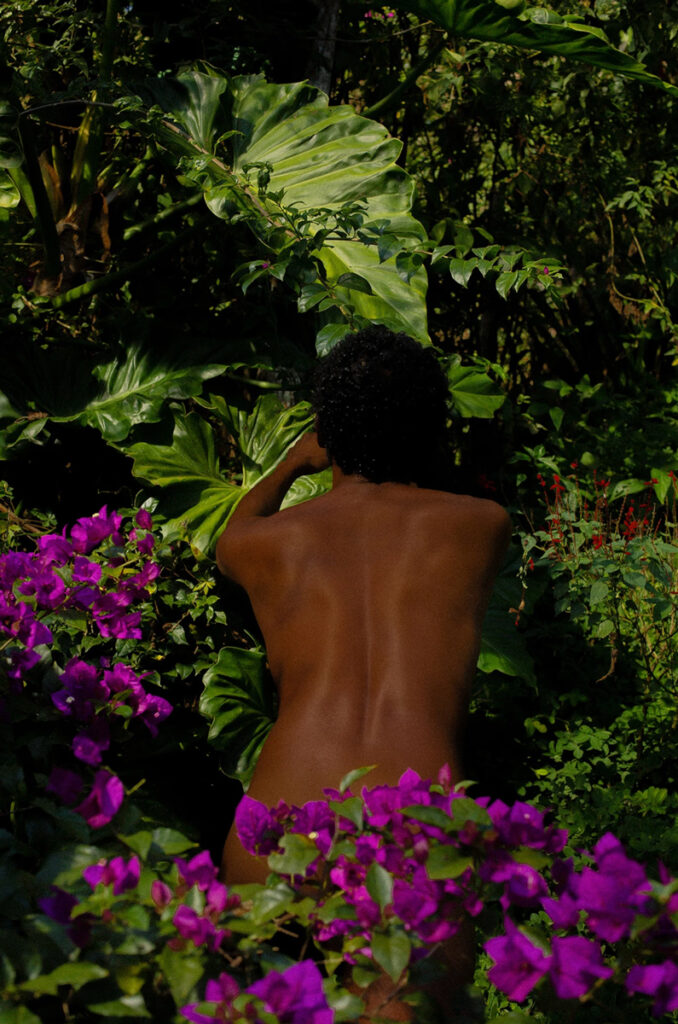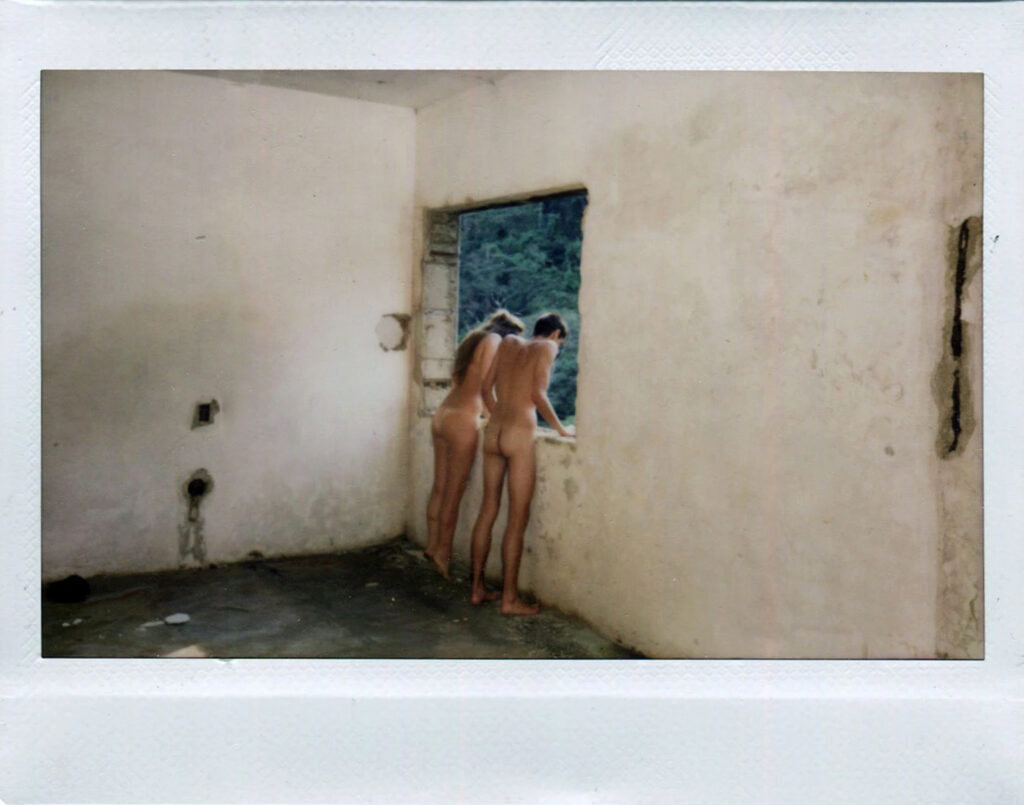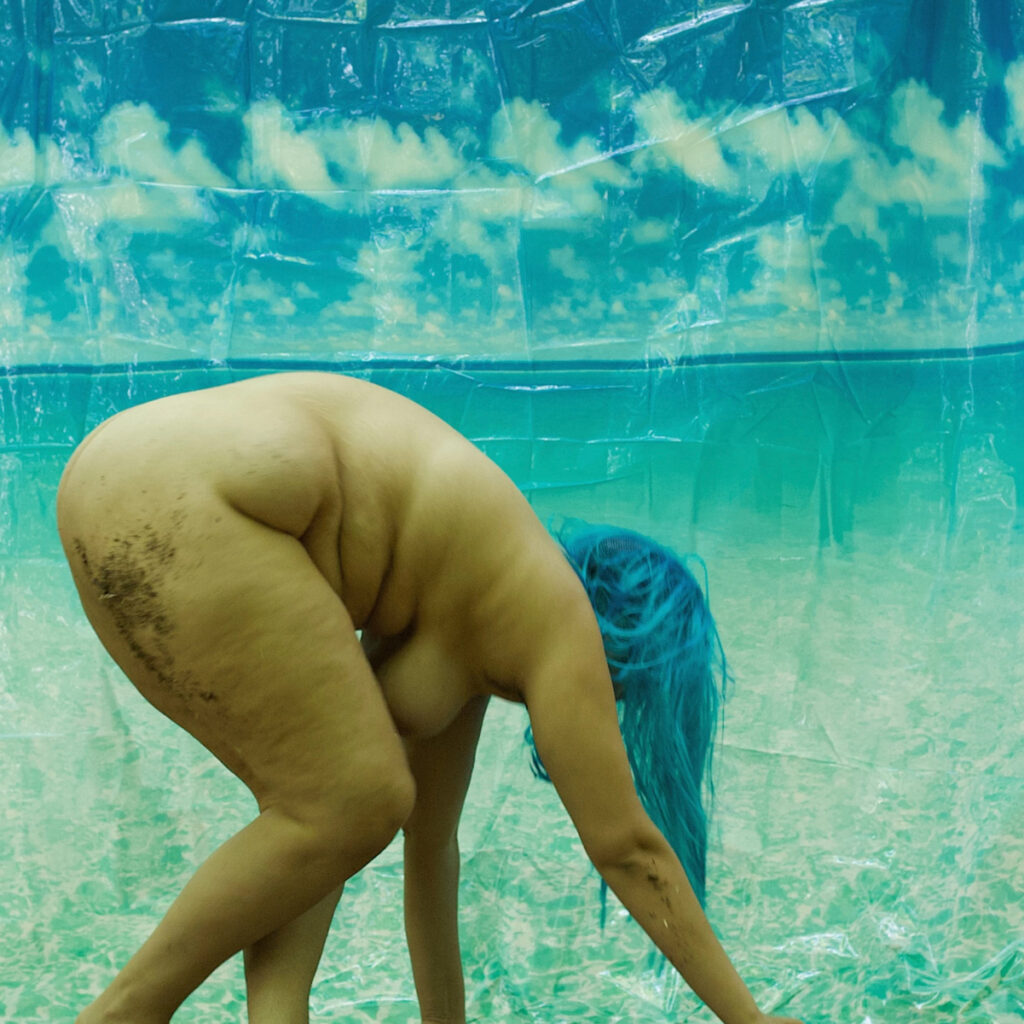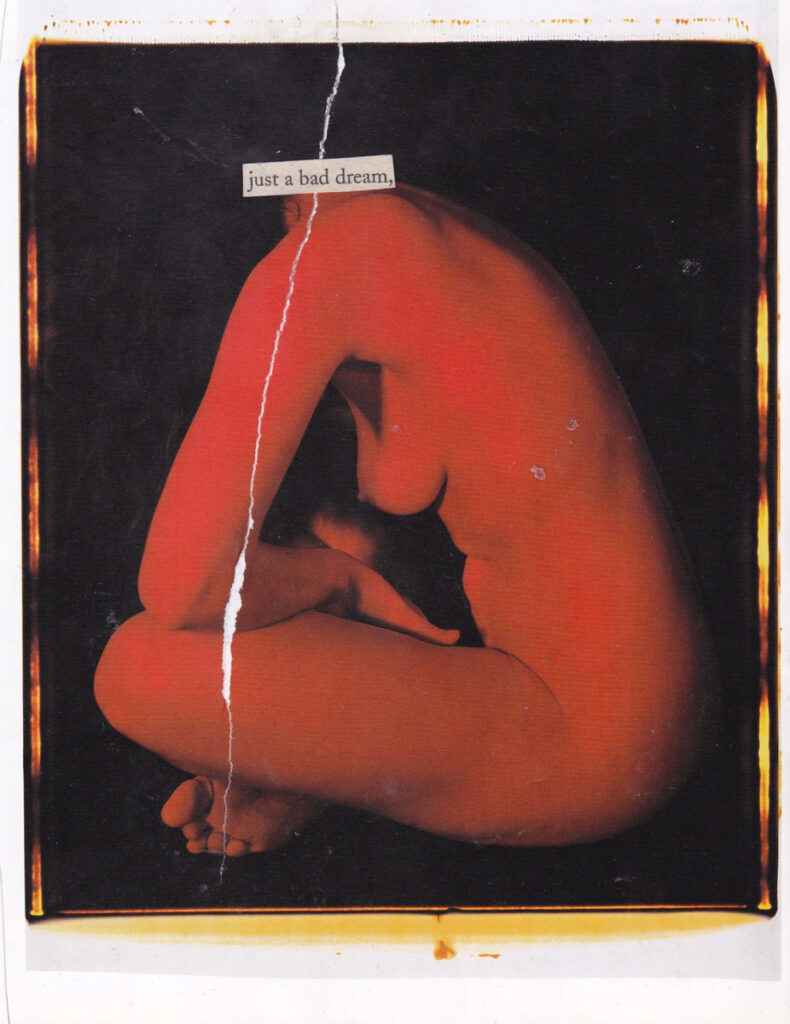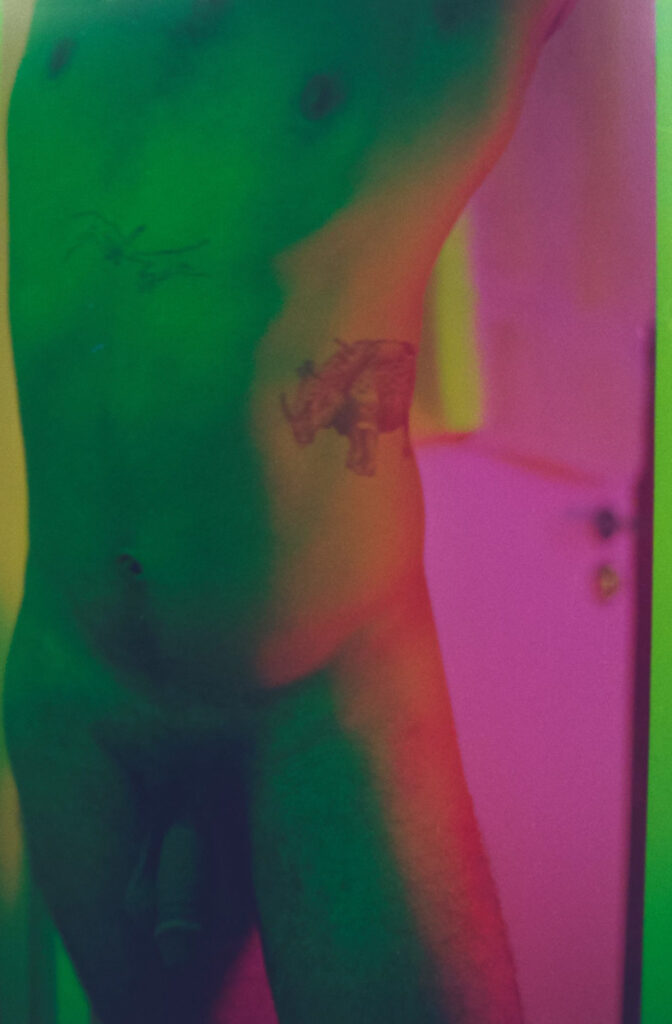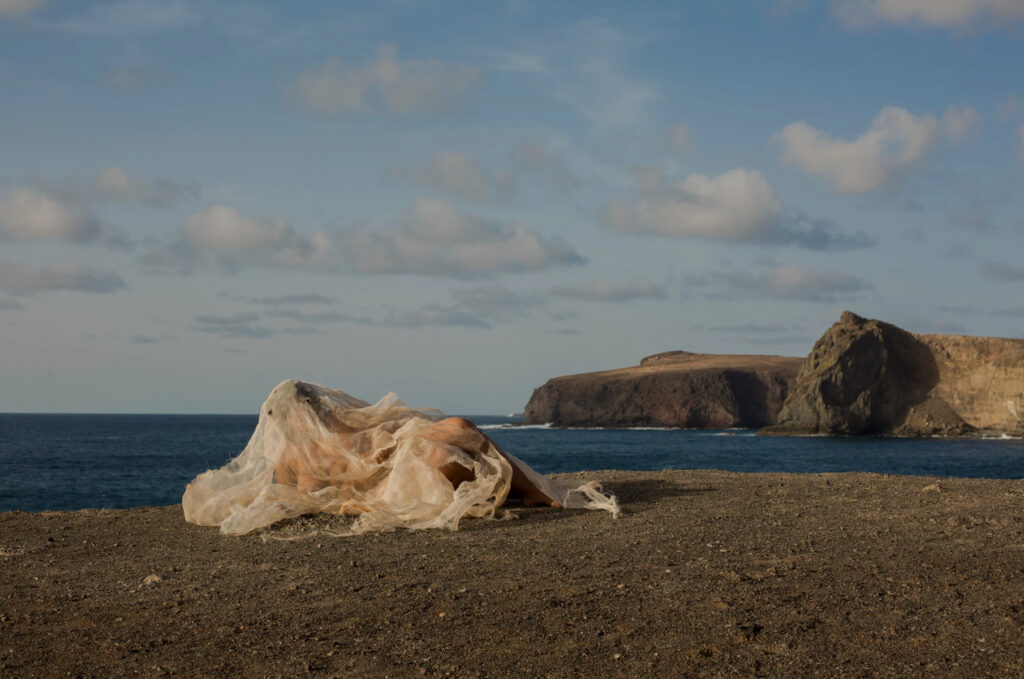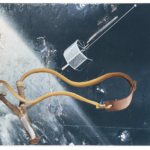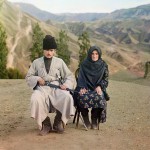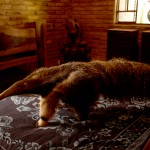As someone who consults an oracle
Publicado em: 8 de August de 2022Fernanda,
Over the last few weeks, I have spent a lot of time looking at your photos and collages, trying to find the right tone and the form to write and organize my impressions of your work. After a few tries that I wasn’t happy about, I thought that the simplicity of a letter would be the best option. My reading of your images is founded in my poetic concerns about the body and language.
In your work, colors, joy, the contrast between nature and artifice are all related, and I observe this through the aesthetic references that come from my life in the Rio suburbs. So, I think it is a good idea to make it clear that my thoughts are influenced by my experience as a Black woman, a translator, someone born and raised in the northern suburbs of Rio de Janeiro. I write from a viewpoint of the crossroads.
I look at your work thinking about how both photography and poetry raise questions. I imagine that many readers and viewers still feel uncomfortable with the fact that art is there to ask questions but does not offer the answers. However, I believe that uncertainty – in particular that raised by a poem or a work of art – can help us live with multiple meanings and possibilities in life.
Let’s start with the people, with the images of these bodies which do not match the conventional standard of thin, white, unachievable, ideal forms constructed from physical exercise, dieting and aesthetic procedures. The people in your photographs have bodies which are relatively commonplace to those who live near the sea and see themselves on the beach, to those who spend time in places where there is room for difference and encounter – such as samba schools, which are full of people of different styles, ages, social classes – bodies which we see around all the time, but are rarely seen in the world of fashion, TV, movies, and streaming services. Bodies called dissident because they do not conform to a binary gender performance, resistant to the undefined and flows.
Your photographs make me think of bell hooks. In her book Black Looks: Race and Representation, the author analyses the importance of artists, film directors, and writers, part of the so-called minorities, creating images that challenge the racist and chauvinist stereotypes, proposing narratives that deconstruct the idea of the different as the other, the exotic, the threatening.
Your images bring me joy when I realize that your models are seen through eyes that are unfiltered by that bias of exoticism. There is an irreverence, an ease in the photos that convey the feeling that, posing or just allowing themselves to be photographed, people feel at ease in front of your lens, comfortable in their body, in their nakedness, in their intimacy.
It’s not just a question of us, people who do not fit a standard, seeing ourselves depicted in art, in popular culture, in literature, but seeing ourselves from a perspective that does not objectify us, which does not make our suffering something natural, nor repeat colonial narratives. When we live in a world to which we are constantly reminded we do not belong, it is comforting to see images of people like us, living simple moments, sunning themselves, diving, having fun, eating, and realize that there is art in these images.
There is beauty achieved in the composition, the lighting and the framing of your images, but, beyond the technical aspects, beauty emerges from the meeting between the model and the photographer, in a possible dialog which is aware of the importance of seeing and being seen, without restricting the vocabulary or limiting the imagination. I think a lot about how certain discourses about representativeness often pay service to the presence of diversity, but do not consider the need for complexity in representation. It is clear that we do, of course, need to see more Black people, more LGBTs, large people, people with disabilities, in all spaces; however, it is important that this greater visibility also challenges and tensions the preconceptions of our society.
To me, your images refer to audacity and humor, as these non-standard bodies seem to enjoy themselves or even totally ignore the camera while being photographed. Your images remind me of Jota Mombaça’s reflections on refusal. To reject associations between the non-standard body and pathologies, subalternity, negligence and also to refuse a performance that conforms to what is considered desirable by heteronormative and patriarchal grammar. It is the elaboration of another language of beauty and desire without reproducing the mechanisms created to exclude us.
In her article “Uses of the Erotic: the Erotic as Power”, Audre Lorde defines the erotic as an “an internal sense of satisfaction” that arises from the degree of care and dedication with which we perform our activities. Whether it is in creative projects, in domestic work, in self-care, “the erotic is not a question only of what we do; it is a question of how acutely and fully we can feel in the doing.” The sensuality that I find in your images does not seem to me to be something thought of with the intention of showing how fat, black, dissident or common bodies are desirable, but it transpires precisely because the people are relaxed, confident, at ease. The intensity of the moment when the photo is taken is visible in the images.
Another aspect that impressed me is the presence of various textures in the photos. We are faced with something perceived by vision, but which seems to try to extrapolate beyond the primacy of vision and provoke other senses. Stones, sand, fabrics, hair, water, clothing provoke touch. Plants and flowers trigger olfactory memory.
I spent a lot of time looking at two photographs – one of a woman taken from the front, wearing a black damask corset which leaves her breasts exposed; another of a woman taken from the back, wrapped in plastic film. There seems to be a conversation between these images, which triggered an initial feeling of unease in me because of the constraint. I kept thinking about how to approach them without falling into an easy and rapid association with the idea of oppression and discomfort, but also trying not to repeat discourses about body positivity – I am suspicious of the great wave of mandatory positivity in various spheres of contemporary life.
While I look at the breasts of the model in a tightly-laced corset, I think of Édouard Glissant’s concept of opacity as “subsistence within an irreducible singularity.” The idea of not constraining the singularity of someone contrasts with the compression of the lingerie and the plastic but leads me to admit my ignorance of the experiences of a large body. I do not know the best strategies for dismantling fat-shaming discourses and proposing other ways of seeing. I notice things, I ask questions.
I let my eyes dwell on the damask fabric of the corset, on the stretch marks, on the bikini marks, and on the sensitive skin of the nipples. I notice the folds of the skin under the plastic wrap and the effect of the reflected light. The well-defined waists make me think of how strange it is that the word “sinuous” includes meanings such as curvy and tortuous. Tortuous for whom? What artifices are hidden in the curves of a body? However, I soon realize that the images seem to talk to each other, because there is this contrast between the skin and the tissue, the skin and the plastic. The organic with the other materials. When I abandon those first easy thoughts, what comes to mind is touch – the feeling of the body photographed against the fabric, against the plastic. The appeal beyond sight quickly evokes a body memory of corsets, of corselets, of being wrapped in plastic film. Anyone who has been tattooed knows it well.
Although corsets were used to restrain women’s bodies, limit their movements or even create the illusion of a silhouette considered beautiful according to the fashion of other times, it is possible to be aware of this, to be critical of the patriarchy and eventually wear one just because it is beautiful.
For the Basque writer and activist Itziar Ziga, to parody traditional femininity, associated with passivity, delicacy and fragility, with glitter, short dresses, feathers, accessories, high heels and other symbols of glamor, according to a logic of excess and mockery, is a strategy to show how what is perceived as female and male is socially constructed and highly codified. “There is no greater insubmission than laughter and pleasure. I refuse to be a warrior with a constant frown, with closed legs.”
In a world that can hardly imagine fat bodies amusing themselves and having an orgasm, there are many possibilities of challenging common sense. To play with props and accessories. To understand that gloss, color, vinyl, power, and glamor are available for those who allow themselves that liberty. Boldness is a way to invite other people to have fun too.
While I was writing the poems for my book Talvez precisemos de um nome para isso [Maybe we need a name for it] I researched how Black female writers spoke of themselves and described their characters without repeating expressions that referred to us as rebels, wild, noisy, aggressive. Over those months, I realized how much importance I give to the space of ambiguity and contradiction. I do not match racist stereotypes, but I do not recognize myself in the delicacy of traditional femininity either. I understand that there are times when I do not want to choose between kindness and wit (the Western vision does not assign either of these attributes to me), so I claim both, without conflict. Your images seem to me to have space for this kind of multiplicity.
It is important to point out that, although I am particularly interested in the possibilities of questioning or disturbing prejudiced perceptions, I understand that the art produced by women, Black people, LGBTs, large people, dissidents, is not limited to responding to the lack of representations that do us justice. You know this as well as I do, Fernanda, but I feel it is important to mention this subject, because to this day most of those at the reception still try to position the challenges within the context of combat, of fighting, which is not always the case. There are many available strategies. This kind of approach to reading art as a reaction to it ignores the intelligence, the curiosity and the creativity of the artists who are passionate about the languages they work with. Making an art form even more diverse makes it possible for it to tell more stories, to include other references and more points of view. That seems to me to be a loving gesture.
When I think of how your collages and photographs offer us countless elements to which we can pay attention and exercise our imagination, I return to Glissant’s observation: “Opacities can coexist and converge, weaving fabrics. To understand these truly one must focus on the texture of the weave and not on the nature of its components.” Your models are non-reductive singularities, who are not readable according to the observer’s desire, to the look of a colonial consumer; the plants, fungi, water, sand, and stones are not decorative. The woven texture of your images is formed by the coexistence of various forms of life, human and non-human.
Beauty is also in this mix.
All the best,
Stephanie
+
Watch at ZUM’s Youtube channel the talk between Fernanda Liberti and Igi Lola Ayedun.
Fernanda Liberti
is a photographer, videomaker and editor. She works in London, São Paulo and Rio de Janeiro. She participated in the exhibition A grande volta do manto tupinambá (Kwá yapé turusú yuriri assojaba tupinambá) [The great return ofTupinambá cloak], organized in 2021 by Funarte in Brasília and Porto Seguro (BA). She has contributed to several national and international publications, such as Vogue, I-D Magazine and M-Journal.
Stephanie Borges is a journalist, translator and poet. Her book Talvez precisemos de um nome para isso [Maybe we need a name for this] (Cepe, 2019) won the 4th Cepe National Literature Prize. She has translated prose and poetry by authors such as bell hooks, Audre Lorde, Claudia Rankine and Margaret Atwood.
Tags: fotografia contemporânea, Revista ZUM 22


